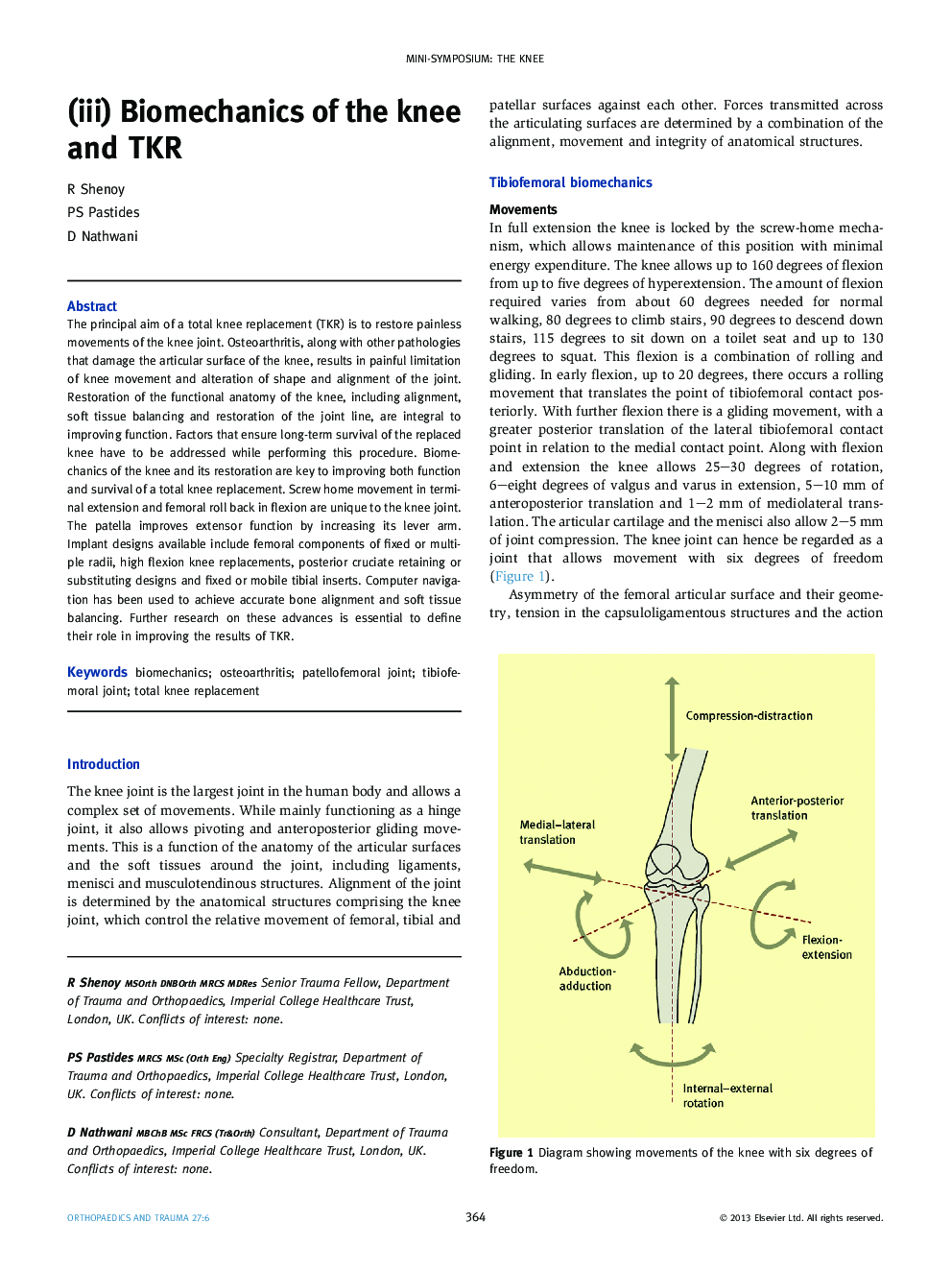| کد مقاله | کد نشریه | سال انتشار | مقاله انگلیسی | نسخه تمام متن |
|---|---|---|---|---|
| 4080396 | 1267545 | 2013 | 8 صفحه PDF | دانلود رایگان |

The principal aim of a total knee replacement (TKR) is to restore painless movements of the knee joint. Osteoarthritis, along with other pathologies that damage the articular surface of the knee, results in painful limitation of knee movement and alteration of shape and alignment of the joint. Restoration of the functional anatomy of the knee, including alignment, soft tissue balancing and restoration of the joint line, are integral to improving function. Factors that ensure long-term survival of the replaced knee have to be addressed while performing this procedure. Biomechanics of the knee and its restoration are key to improving both function and survival of a total knee replacement. Screw home movement in terminal extension and femoral roll back in flexion are unique to the knee joint. The patella improves extensor function by increasing its lever arm. Implant designs available include femoral components of fixed or multiple radii, high flexion knee replacements, posterior cruciate retaining or substituting designs and fixed or mobile tibial inserts. Computer navigation has been used to achieve accurate bone alignment and soft tissue balancing. Further research on these advances is essential to define their role in improving the results of TKR.
Journal: Orthopaedics and Trauma - Volume 27, Issue 6, December 2013, Pages 364–371